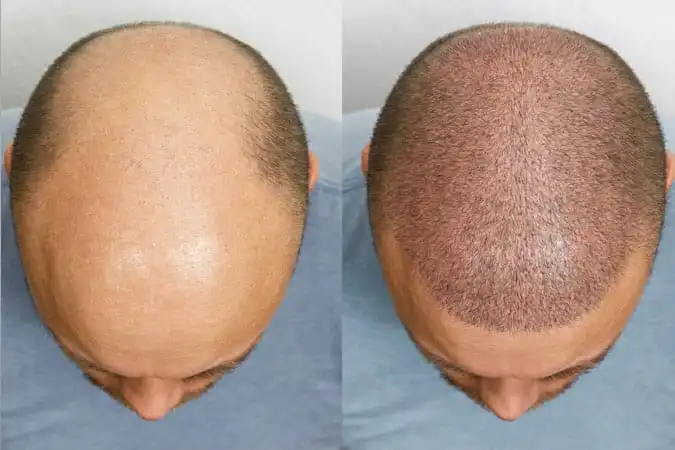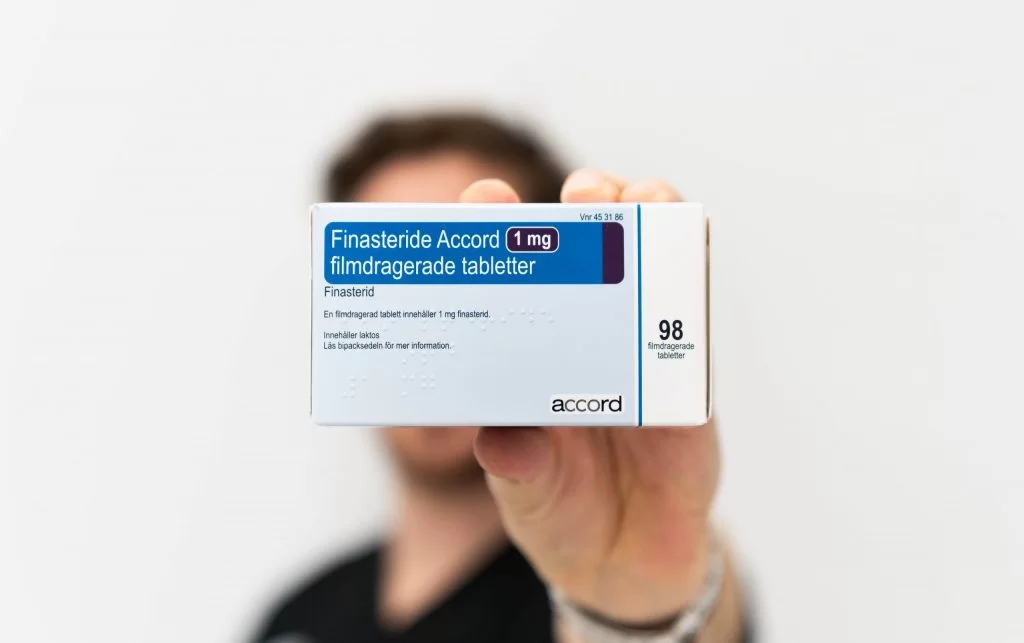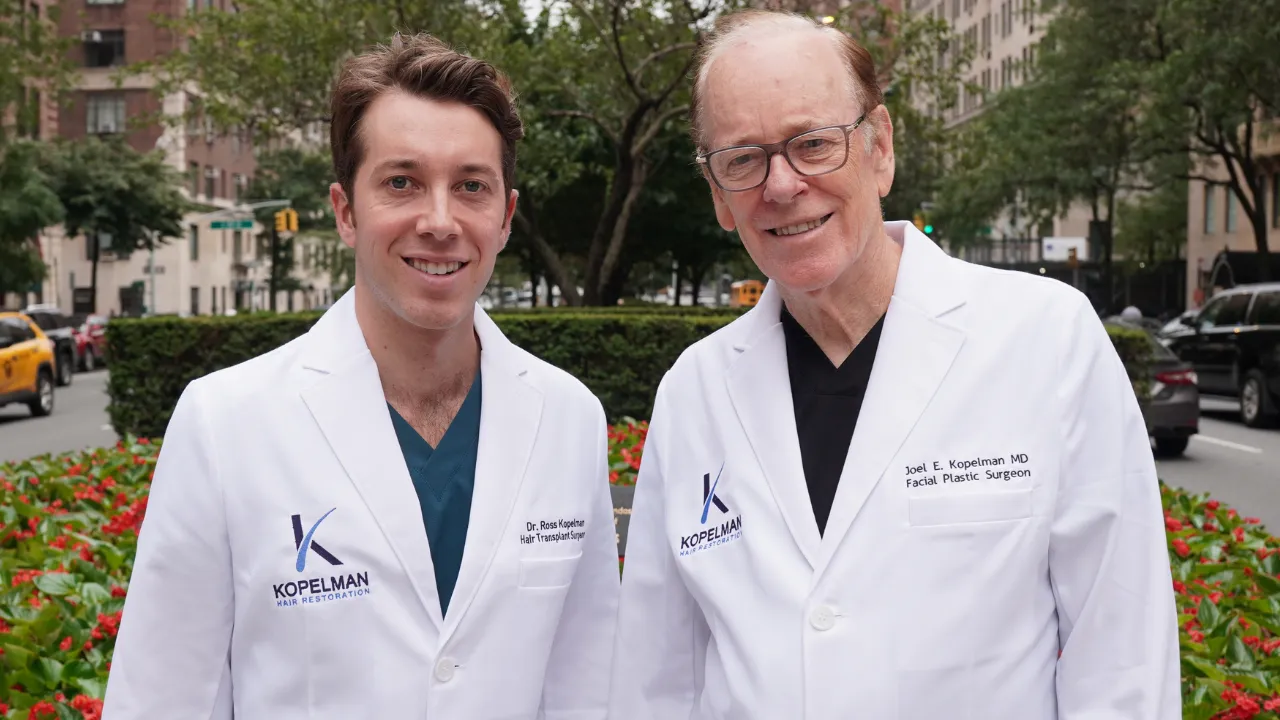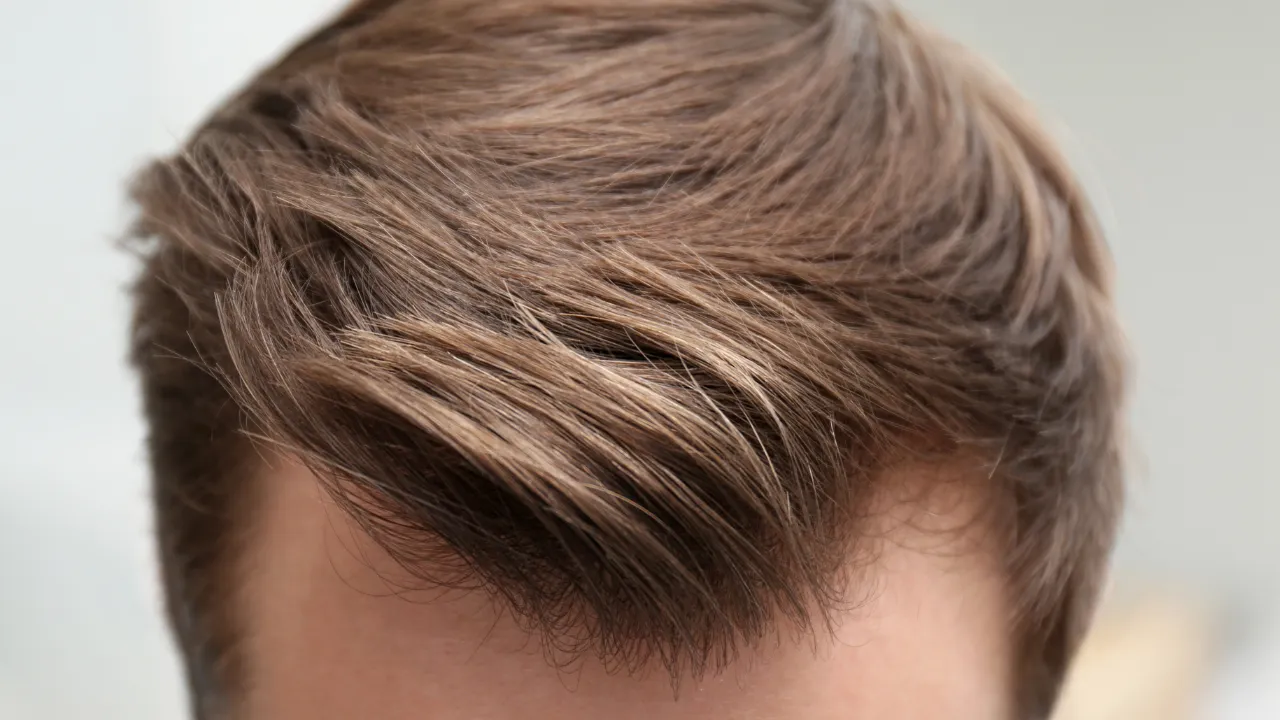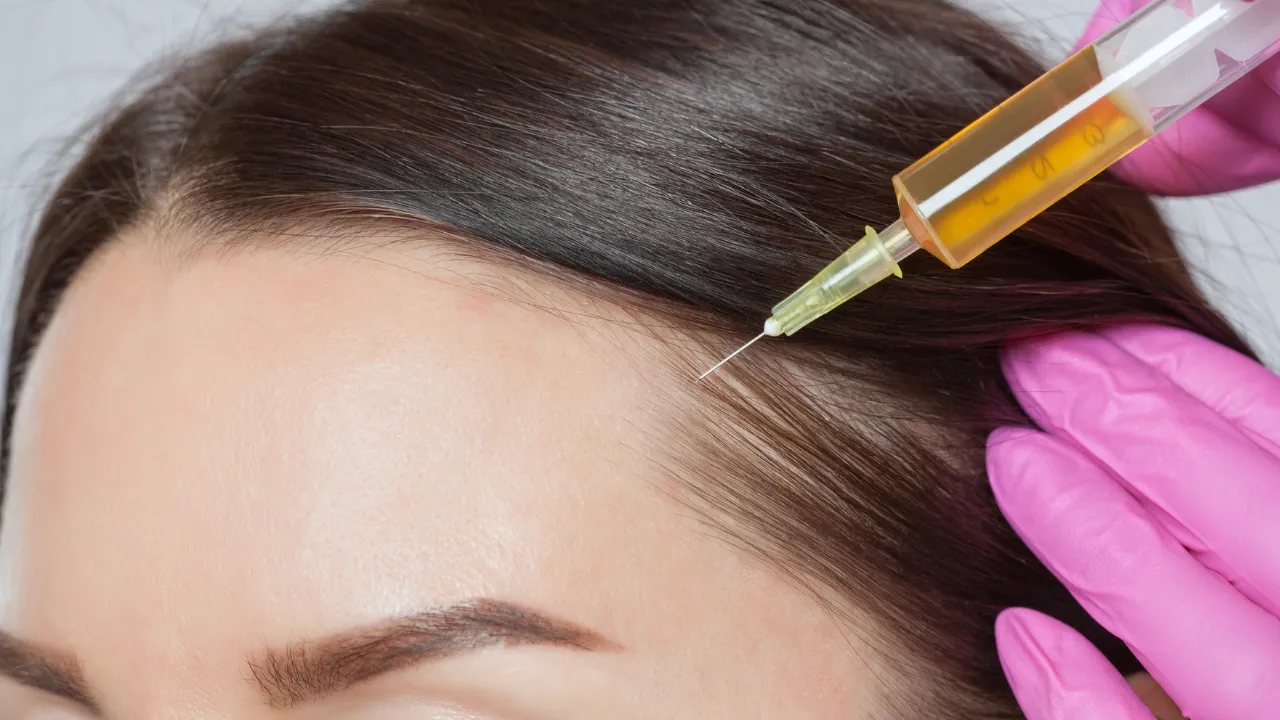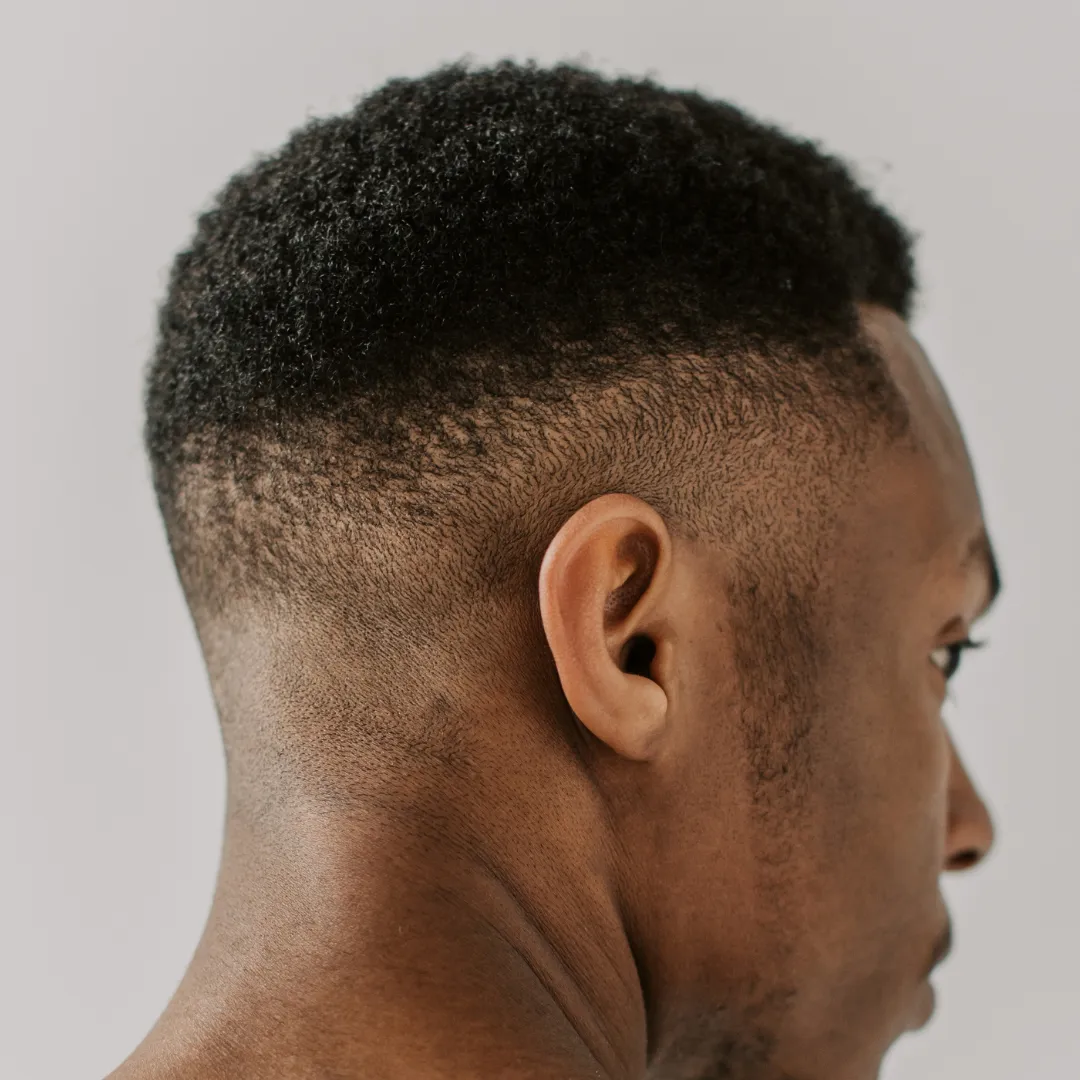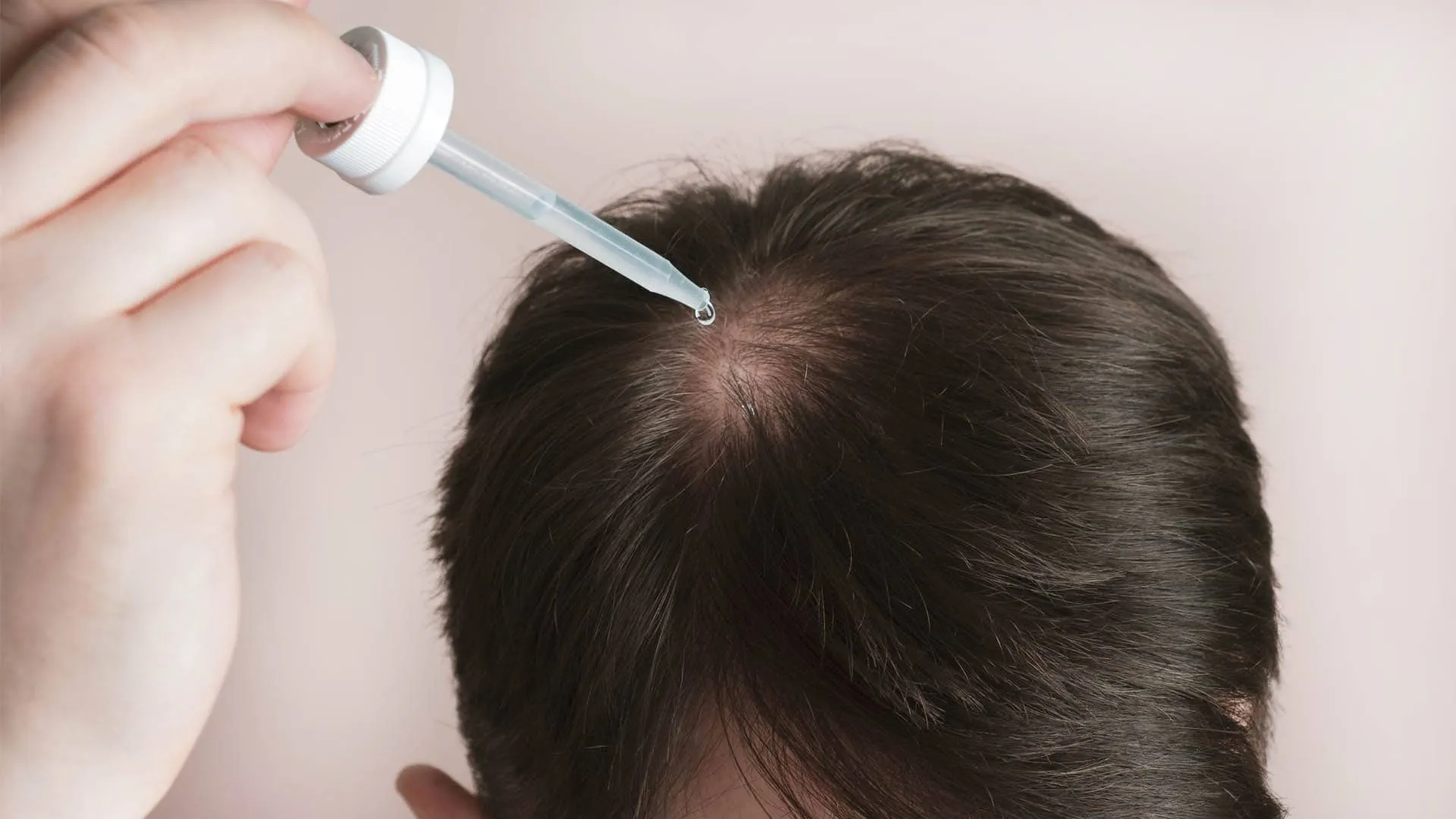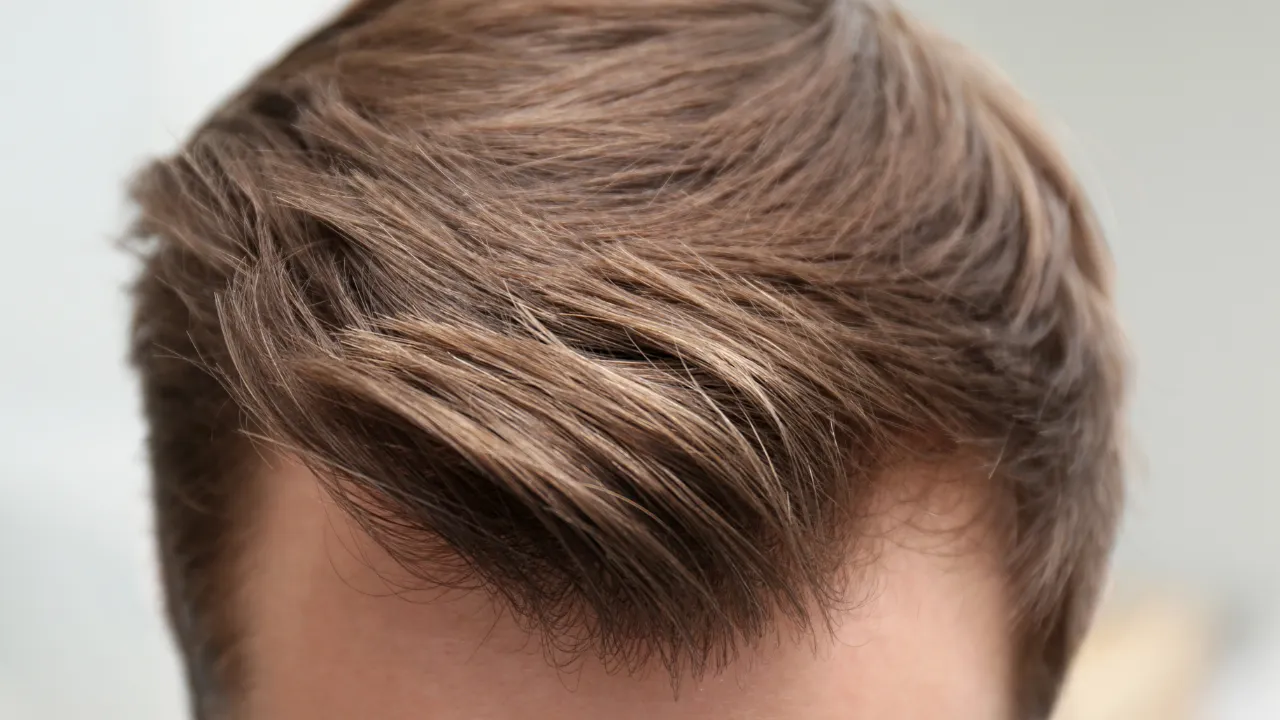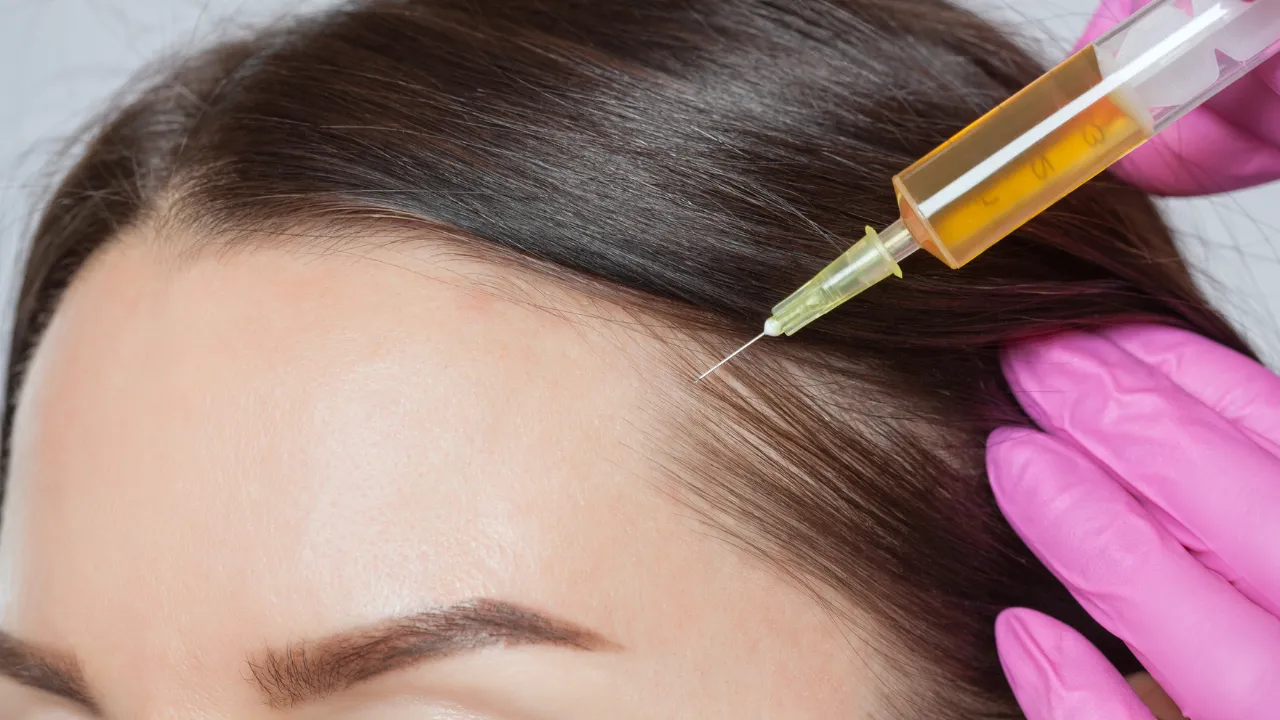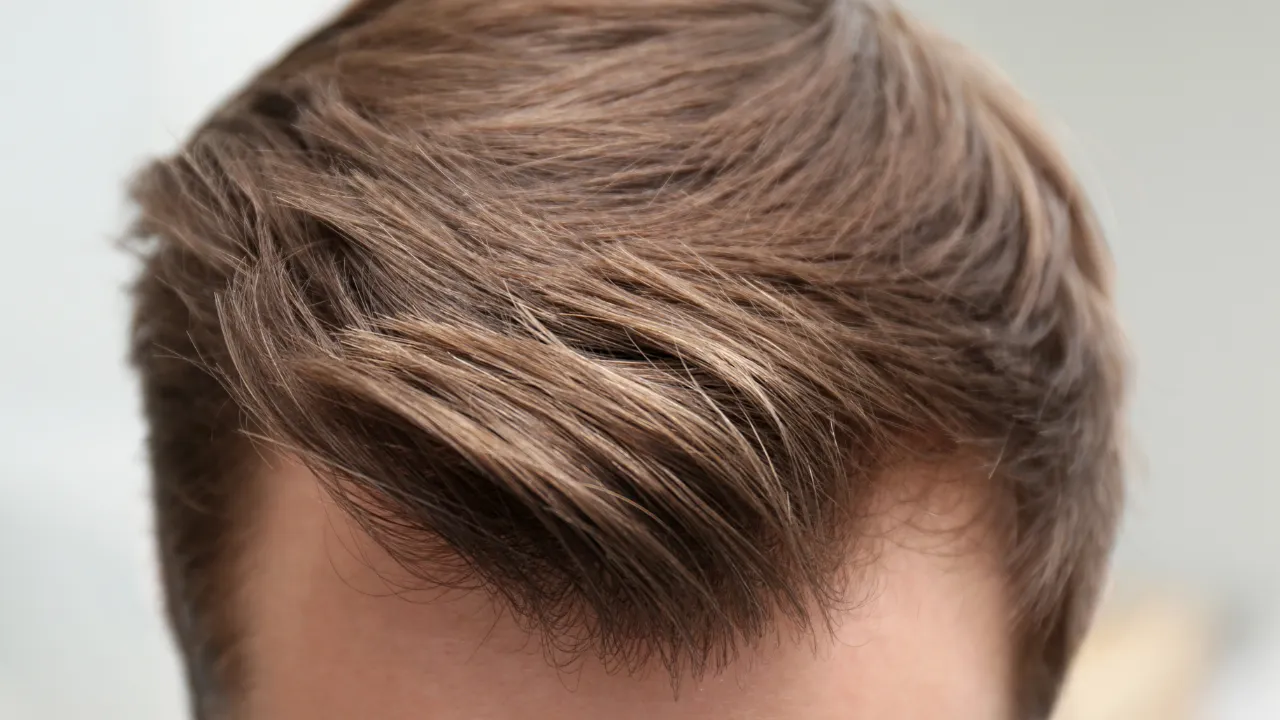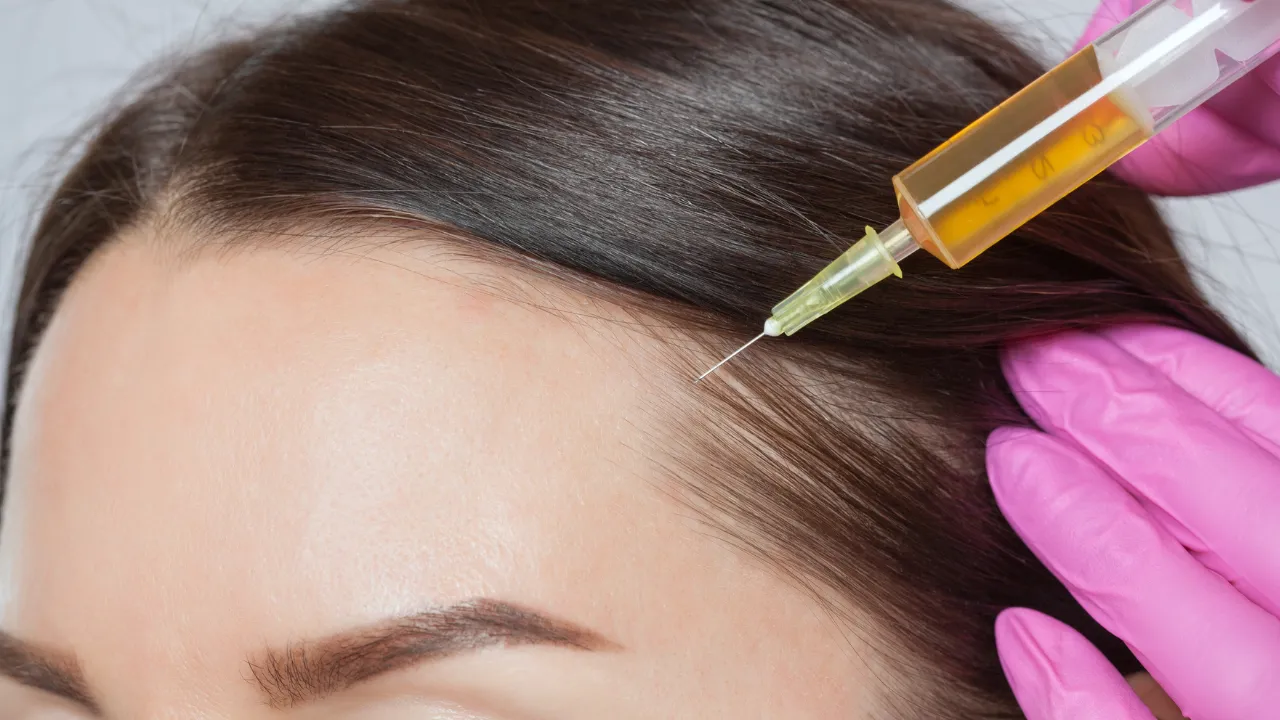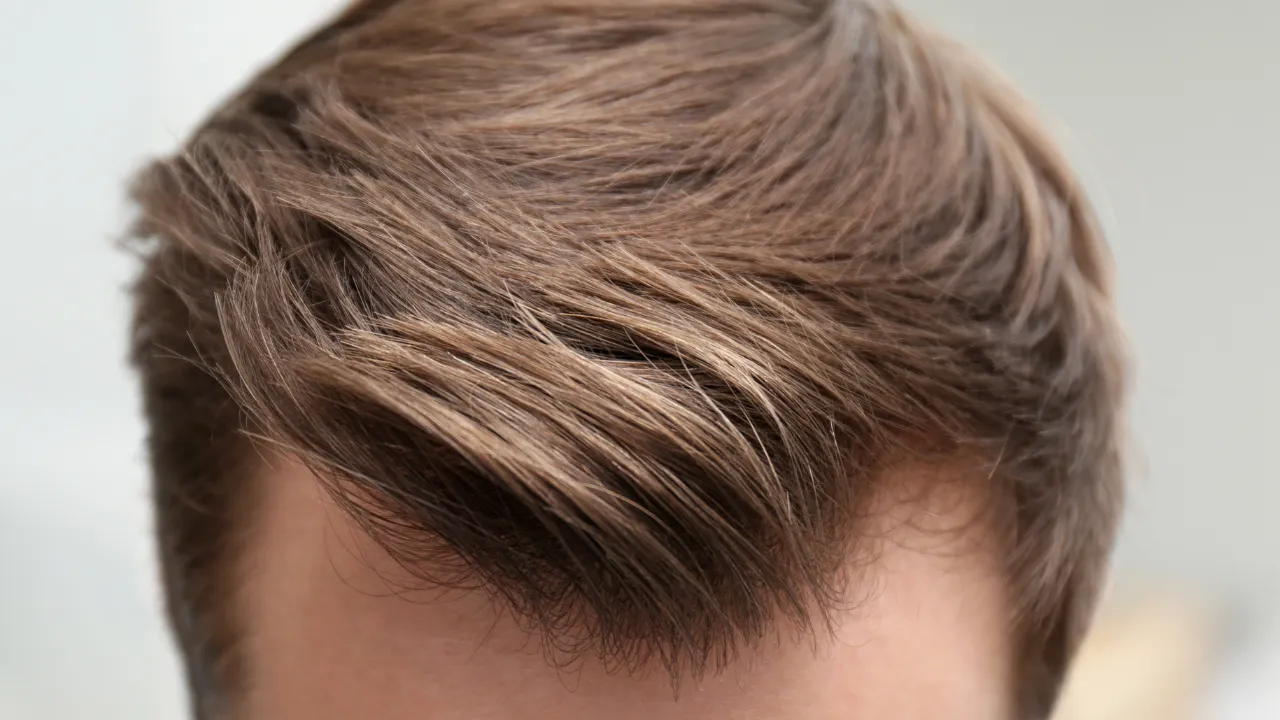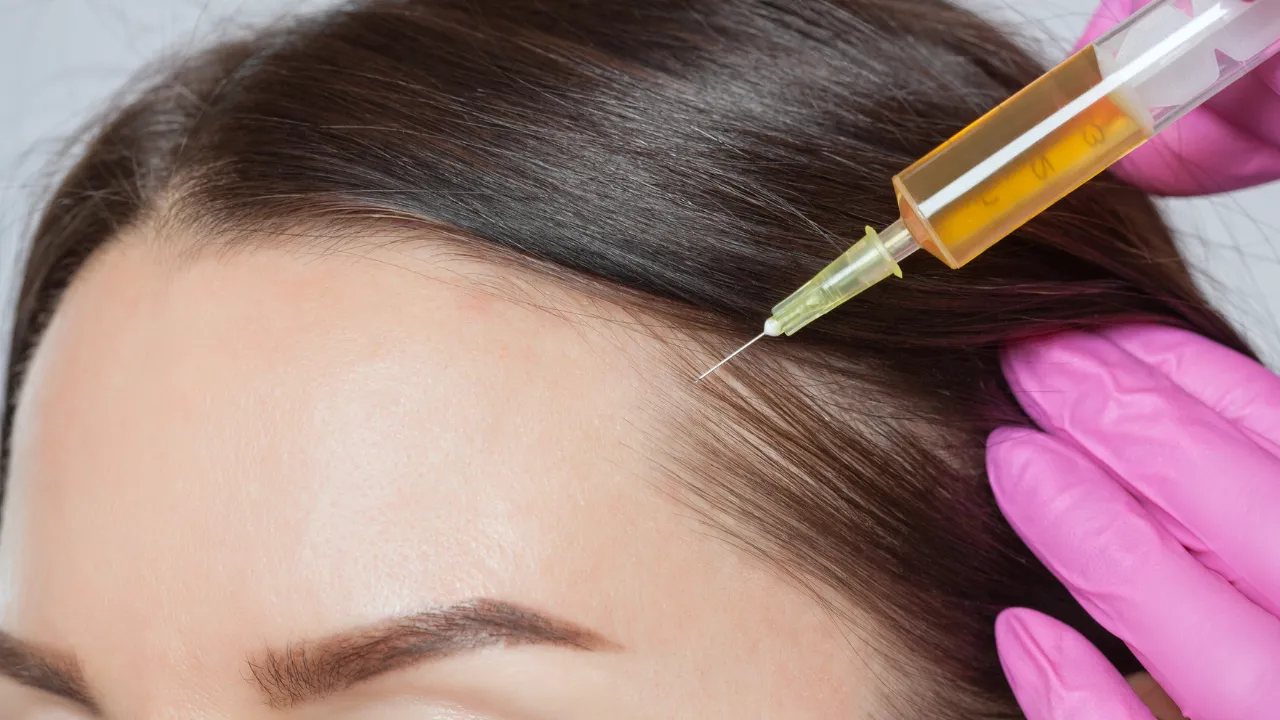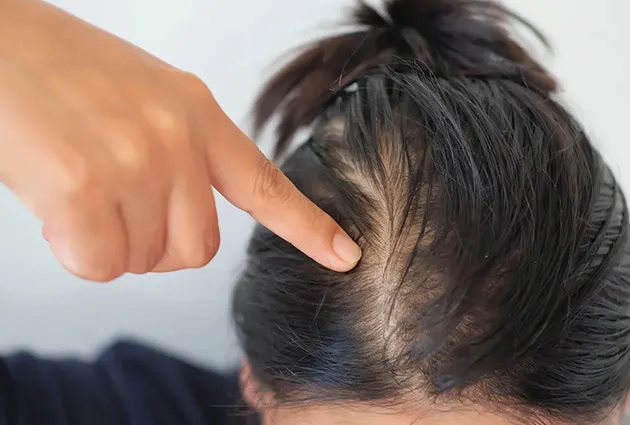Table of Contents
ToggleAt Kopelman Hair, we guide patients through every stage of hair restoration surgery. The day after hair transplant surgery is crucial for healing, and knowing what to expect helps recovery. Dr. Kopelman, a trusted hair transplant surgeon, ensures safe, personalized care for lasting results after hair restoration surgery.
Key Takeaways
- Redness, swelling, and scabs are normal after a hair transplant and need gentle care.
- Patients should avoid scratching, follow washing instructions, and keep the head elevated to protect the transplanted area.
- Mild hair shedding in the first month is normal, with new hair starting to grow around month three.
- Typically, full hair transplant results appear within 12 months with proper care and patience.
Day After Surgery: What to Expect
The day after hair transplant surgery can feel overwhelming. Patients often see redness, mild swelling, and scalp tightness—normal signs of the hair transplant healing process.
Small scabs may form in the recipient area, while the donor area might feel tender. The transplanted area often appears red and slightly swollen as the body starts healing. Dr. Kopelman reassures patients that gentle care supports healthy growth.
Day After Hair Transplant Surgery Pictures
Photos taken the next day show redness and tiny crusts. This can worry patients, but it’s normal in the hair transplant healing process.
Everyone heals differently. Dr. Kopelman encourages sharing photos directly for personalized advice.
“At Kopelman Hair, I personally review each patient’s photos during the first week to ensure proper healing.” – Dr. Kopelman.
Hair Loss the Day After Surgery
Some patients lose a few hair shafts on Day 1, which is normal and temporary.
Called shock loss, it doesn’t affect long-term success. The hair transplant recovery process focuses on the follicles beneath the skin.
Pain and Swelling Levels
Pain varies but is often mild, like a sunburn. Swelling may appear on the forehead or around the eyes, but usually fades quickly.
Dr. Kopelman recommends elevating your head and using prescribed medication.
“I always advise my patients that swelling peaks around Day 2 or 3, and this is completely normal.” – Dr. Kopelman.
Sleeping Tips for Recovery
Sleeping upright helps reduce swelling during the hair transplant first week. A travel pillow keeps your head stable.
Avoid rubbing your scalp to protect healing hair transplant results.
Does Day of Surgery Count as Day 1?
Yes—surgery day is Day 1 of the recovery period. Knowing this helps track progress after your hair transplant after procedure.
Coping With Emotions After Hair Transplant
It’s normal to feel anxious about appearance early on. Redness and swelling fade quickly and don’t reflect final results.
Staying positive is crucial to a successful hair transplant recovery. Focusing on daily life helps ease worry.
Hair Transplant Daily Healing Timeline
Day 1: Redness and mild swelling. Keep head elevated and avoid touching the scalp.
Day 2: Swelling may increase. Avoid bending forward, and don’t wash your hair unless advised.
Day 3: Scabs appear, and swelling lessens. Gentle washing may begin if permitted.
Day 4: Redness fades slightly, and mild itching starts. Don’t scratch and continue gentle washing.
Day 5: Scabs soften, and itching may continue. Avoid picking scabs.
Day 7: Redness decreases, and crusts begin falling off. Follow washing instructions carefully.
Day 21: Scabs are gone, but mild pinkness might remain. Maintain gentle care routines.
Day 30+: Hair shedding may continue. Stay patient and avoid harsh styling.
This table helps patients see the hair transplant healing process and serves as a clear hair transplant recovery timeline.
Hair Transplant Recovery: Day by Day Timeline
Day 1 After Hair Transplant
No changes from your original text.
Day 2 After Hair Transplant: What to Expect
Swelling may increase slightly. It’s still too early for washing unless Dr. Kopelman says otherwise.
Patients often feel anxious, but redness peaking now is normal. Avoid bending forward to reduce swelling.
Don’t worry if your scalp looks redder—it’s normal in the hair transplant healing process. Dr. Kopelman reminds patients that healing varies.
3 Days After Hair Transplant: What to Expect
By 3 days after hair transplant, pain often decreases, though scabs may be visible. Gentle hair washing usually starts now.
Treat the donor area, recipient area, and transplanted area gently during care. Many patients wonder about the hair transplant after 3 days stage; mild redness and scabs are typical and resolve with time.
Don’t worry if scabs look prominent—it’s part of normal healing. Dr. Kopelman advises avoiding scratching.
Day 4 After Hair Transplant: What to Expect
Redness often fades, and scabs begin loosening. Mild itching can occur, but avoid scratching.
Dr. Kopelman emphasizes that each patient heals at their own pace. Stay consistent with care to maintain a smooth hair transplant recovery.
Don’t worry if crusts remain—they’re a normal part of hair transplant healing. Dr. Kopelman reassures patients they’ll fall off naturally.
5 Days After Hair Transplant: What to Expect
No changes from your original text except for reassurance insert:
Don’t worry if itching increases—it’s normal as scabs soften. Dr. Kopelman reminds patients not to scratch.
7 Days After Hair Transplant (+ Pictures)
By day seven, most scabs fall off, and swelling improves.
Minor redness may persist. Photos at this stage show clear signs of hair transplant healing.
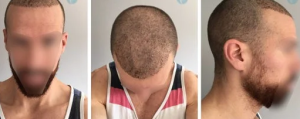
Don’t worry if pinkness remains—it fades over time. Dr. Kopelman says mild redness is common.
21 Days After Hair Transplant
Most scabs are gone. Mild redness may linger, but it’s a normal part of the healing process.
Some shedding is still possible during hair transplant recovery.
Don’t worry if shedding happens—it’s normal. Dr. Kopelman reassures patients that follicles remain intact.
1 Month After Hair Transplant Care
At one month after hair transplant, new hairs enter the hair growth cycle. The newly transplanted hair often appears fine but thickens gradually.
Patients should gently wash their hair and avoid styling that causes stress. Dr. Kopelman emphasizes patience for visible regrowth.
3 Months After Hair Transplant Photos
By three months, photos show new hair. Density may remain thin, but will improve.
The newly transplanted hair starts growing as part of normal progress.
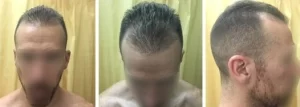
What Day Is Most Painful After Hair Transplant?
Pain often peaks on Day 2 or 3 but decreases fast.
Cooling packs and medications help comfort. Dr. Kopelman’s guidance ensures smooth hair transplant healing.
Shock Loss After Hair Transplant Surgery
Shock loss is a temporary shedding around grafts, usually occurring weeks two to four.
Dr. Kopelman explains that follicles remain secure. It’s a normal part of hair transplant recovery.
Understanding Hair Shedding vs. Permanent Loss
Seeing shedding is stressful, but it’s not permanent hair loss.
Shock loss means hairs fall out, but follicles stay safe. New growth confirms the hair transplant healing process. Dr. Kopelman urges patience.
Scalp Care and Healing Process
Dr. Kopelman reminds patients that gentle washing prevents scabs from building up.
He stresses not to scrub the scalp during the early recovery period.
Clothing and Daily Habits After Surgery
Wear button-up shirts to avoid disturbing grafts during the hair transplant first week.
Other helpful tips:
- Use soft pillowcases.
- Skip tight hats unless cleared.
- Keep water lukewarm.
- Avoid styling products early on.
Small habits help protect your hair transplant after procedure results.
Activity and Lifestyle Guidelines
Patients should limit their physical activities initially. Heavy exercise raises the risk of swelling.
Dr. Kopelman recommends easing back into workouts only after the scalp has healed.
Traveling After Hair Transplant Surgery
Short car rides are fine a few days post-surgery.
Wait a week if flying. Cabin dryness can irritate the scalp during hair transplant healing. Always follow Dr. Kopelman’s advice for safe hair transplant post-operation travel.
Quick Do’s and Don’ts After Hair Transplant
Dr. Kopelman shares essential tips for smooth hair transplant recovery:
Do:
- Sleep elevated.
- Wash gently.
- Keep scalp dry.
- Attend check-ups.
- Eat balanced meals.
Don’t:
- Scratch your scalp.
- Wear tight hats too early.
- Use styling products too soon.
- Exercise hard immediately.
- Worry if hairs shed—it’s normal.
These habits help ensure a lasting recovery from hair transplant surgery.
FAQ About Hair Transplant Recovery
Hair Growth Timeline and Results
Full hair transplant recovery typically takes 12 months. Redness might persist longer in some patients.
New hair often begins to grow around the third month. Over time, hair will grow fuller through the hair growth cycle. Dr. Kopelman emphasizes the importance of patience and steady follow-up for the best possible outcome.
If you’re considering hair restoration or have questions about your recovery, schedule a consultation with Dr. Kopelman today. He’s committed to helping you achieve natural, lasting results with personalized care every step of the way.


